The Gol Gumbaz
This is an extract from the book, “Bijapur: The Old Capital of the Adil Shahi Kings” by Henry Cousens, published for the Archaeological Survey of Western India. This book was published in 1889. The entire book is available as a free download from Archive.org, here in various formats. The text has been presented as is, from the book. Other open-source references have been added to aid understanding of concepts used in the extract.
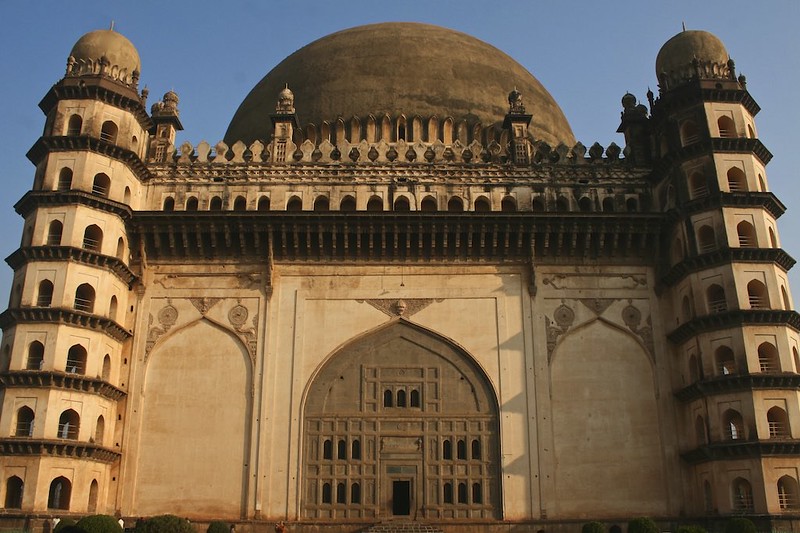
By far the largest and most conspicuous building in Bijapur is the mausoleum of Muhammad, (or Mahmud as he is sometimes called) Adil Shah.

In the time of the “Merry Monarch” Bijapur attained its zenith of architectural greatness. Luxury held her court within its walls, and the Sultan and his nobles worshipped at her shrine. One of the first concerns of the king on ascending the masnad was to build his own tomb, and to set about it at once, so that there might be a chance of completing it before he died. In this there was naturally great rivalry, for each monarch wished to leave such a tomb behind him as would eclipse those of his predecessors, leave no room for improvement to his successors, and so single out his name conspicuously from them all. And Muhammad certainly succeeded in doing this in a manner beyond anything attempted before or after him. Ibrahim II., his father, had just been buried in his own tomb the like of which was not to be found anywhere in the Dekhan. With its lavish abundance of decoration, its slender and graceful minarets, its exquisite proportions, and surroundings of lovely gardens, it made his father’s simple tomb sink into insignificance and become a hovel beside it. Here was a puzzle for this ‘Old King Cole.’ How was he to surpass it ? In this last work the architects and builders had done their very best, they could do no more. The only thing left to him then was to substitute quantity for quality. If he could not surpass the delicate chiselling and lacelike balustrades of the Ibrahim Rauza [Wiki | Image], he would, at least, build such a tomb as would, by its immense size, dwarf this and every other building in the city, a tomb that would arrest the eye from every quarter for miles around, and carry with it the name of Muhammad, the great Sultan Muhammad
The general appearance of the building is that of a great cube, surmounted by a huge hemispherical dome, with an octagonal tower at each of its four corners, these being crowned by smaller domes. The only prominent feature on the faces of the building is the great deep overhanging cornice which, at a high level, runs round all four sides. The doorways, small lancet windows, and surface decoration by no means assert themselves, and from a short distance off are hardly noticed on the bare looking walls. The monotony of this, however, is broken by the towers which are riddled with windows from base to summit — seven in each of the seven storeys into which the tower is divided. The crest of the walls, above the cornice, is crenellated. The diameter of the dome is rather less than the breadth of the building. A winding staircase ascends in each of the corners of the building, just where the towers abut on to it, and, communicating with each storey of the tower, at last leads out on to the flat roof, between the corners and the dome. Passages lead from the roof, through the thickness of the dome, into the whispering gallery round the interior of the same.
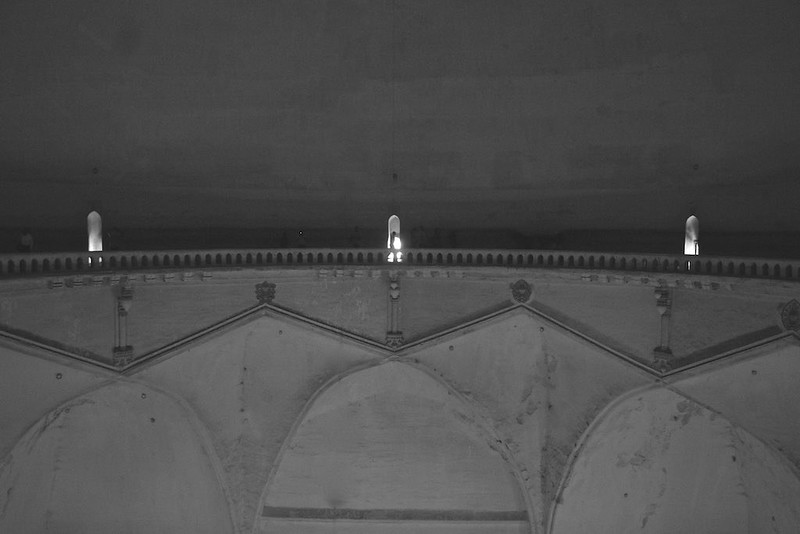
The dome is practically a hemisphere of 124 ft. 5 in. interior diameter. The thickness of the same at the springing is 10 feet, whilst near the crown it is 9 feet. Thus the total external diameter at the springing is 144 feet. The curves of the surface are nowhere perfect so that the measurements taken across different diameters vary several inches. The great compartment below, which is covered by the dome, is 135 ft. 5 in. square at the floor level, and this gives an area of 18,337.67 sq. ft., from which if we take 228.32 sq. ft. for the projecting angles of the piers carrying the cross arches, which stand out from the walls into the floor, two on each face, we get a total covered area, uninterrupted by supports of any kind, of 18,109.35. sq. ft. This is the largest space covered by a single dome in the world, the next largest being that of the Pantheon at Rome of 15,833 sq. ft.
The total exterior height of the building above the platform on which it stands is 198 ft. 6 in. exclusive of the wooden pole at the top. But this, when it held the gilt finial, formed part of the building and another 8 feet must be allowed for it and this would give an extreme height of 206 ft. 6 in. The interior height from the level of the floor around the tomb platform to the top of the dome is 178 ft. The drop from the gallery to the floor below is 109 ft. 6 in.
In this colossal mausoleum we have the system of the pendentives, used with such effect throughout the Bijapur buildings, displayed to its greatest advantage.

“In a spherical roof intersected with groined compartments, the term pendentives was applied to the surfaces included between such compartments. The same term is applied to the surfaces included in the angles formed by a groined vaulting at its spring.” It is in the latter sense that it is used in the Bijapur buildings. The pendentives are thus a result of cross arching or groining.
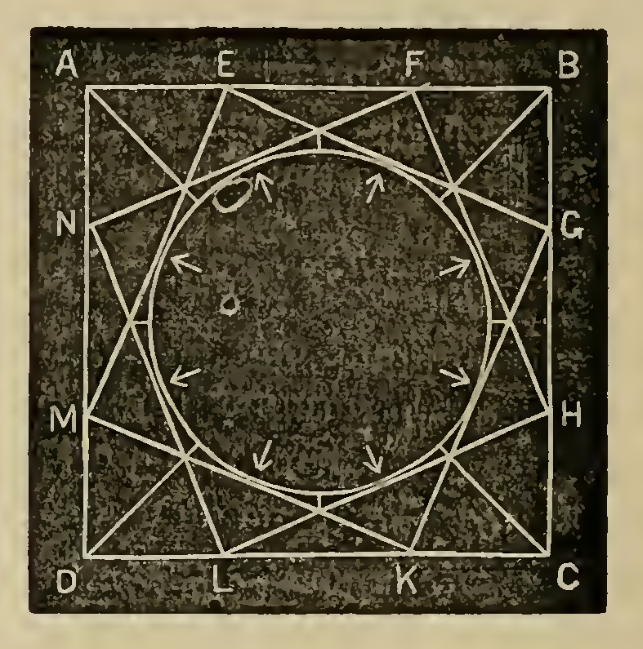
The accompanying diagram explains the arrangement. ABCD is the square room to be covered in. Points are taken in the walls at E, F, G, H, K, L, M, and N so that they form the corners of an octagon. At these points buttresses or piers are built up the walls to carry arches. The latter are then thrown across from one pier to an alternate pier so that the arches thus constructed form in plan two intersecting squares EGKM and FHLN, and the crowns of all the arches fall upon a circle inscribed within these squares, and carry the dome which may be as small in internal diameter as this circle. It will thus be seen that the dome rests directly upon the crowns of the arches, which are always pointed, and the former being a solid mass of concrete, like a shell with no loose voussoirs, it rests as a dead weight upon the crowns of the arches conveying no outward thrust to them. The lines joining the intersections and points of the arches and the corners of the outer square, cut up the space between the circle and these corners into a number of concave spherical triangles. These are the pendentives.
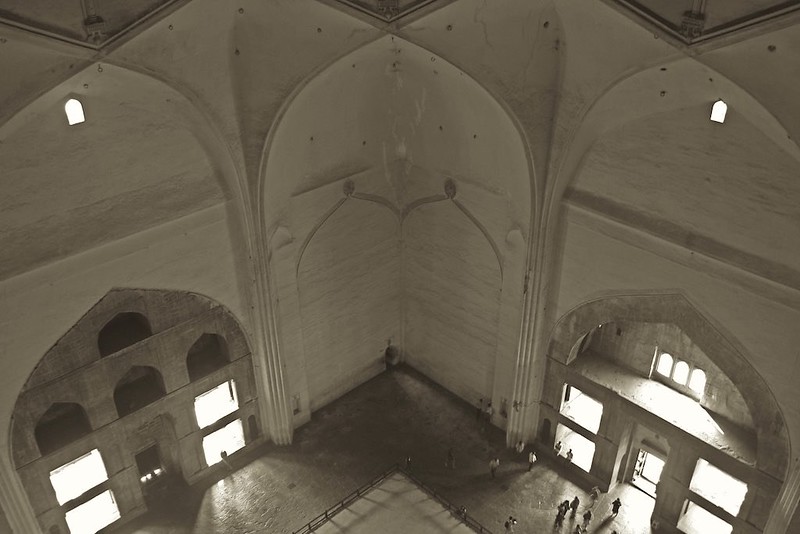
On the great raised platform in the centre of the buildings under the dome are the duplicate tombs of the grandson of Sultan Muhammad, his younger wife Arus Bibi, the Sultan himself, his favourite mistress Rhumba, his daughter, and his older wife, in this order from east to west. The real tombs, where the bodies lie, are in the vaults immediately below these, the entrance to which is by a staircase under the western entrance. Over Muhammad’s tomb is erected a wooden canopy.

The most remarkable feature about this tomb is its whispering gallery. This, as mentioned before, runs round the interior of the dome on a level with its springing, and hangs out from the walls into the building. It is about 11 feet wide, the dome itself forming the back wall of the same. On entering the building one is struck with the loud echoes that fill the place in answer to his footfall; but these sounds are much intensified on entering the gallery. One pair of feet is enough to awaken the echoes of the tread of a regiment; strange eerie sounds, mocking whispers,, and uncanny noises emanate from the walls around. Loud laughter is answered by a score of fiends. The slightest whisper is heard from side to side; and a conversation can be most easily carried on across the full diameter of the dome in the lowest undertone. A single loud clap is echoed over ten times distinctly.
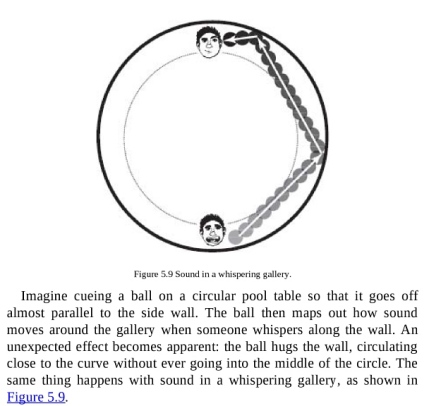
Instances of multiple echoes, such as this, are the Pantheon, the tomb of Metella, the wife of Crassus, which is said to have repeated a whole verse of the Æneid as many as eight times, and the whispering gallery of St. Paul’s. It is not at all likely, as some suppose, that the architect of this building had the production of a good echo in view when he constructed the dome, for it is no more than a duplicate of many a dome in Bijapur, on a much larger scale, with nothing extra, about it in any way. The echo was, no doubt, a purely natural result of the size of the dome. In the smaller domes we get what is called resonance, their diameters not being sufficiently great to allow of a distinct echo. It requires rather more than 65 feet between a person and the reflecting surface so that the sound on return may reach his ear immediately upon the dying out of the original sound and so create the impression of a second sound — an echo. If a greater distance intervenes the echo is more distinct as more time separates the original sound from the reflected sound. If the distance is less no distinct echo results, as the original and reflected sounds overlap and produce a confused sound or resonance.
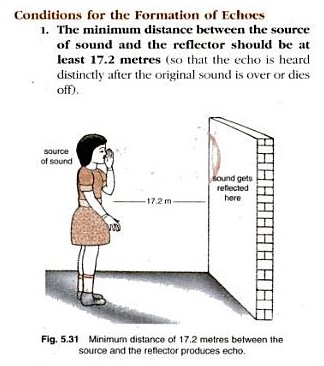
From the roof of the tomb, surrounding the dome, a most extensive view of the whole city is obtained. To the south-west is the Jama Masjid conspicuous among its surrounding buildings; more to the west may be seen Mustafa Khan’s mosque, the Asar Mahal with its great open front, and the many buildings in the citadel, most prominent among which is the Anand Mahal. Directly west is, first, the unfinished mausoleum of Ali (II.) Adil Shah with its rows of skeleton arches, then the lofty Haidar Burj with the old Dekhani Idgah beside it. Away beyond the walls are the domes and minarsof the Ibrahim Rauza, and the white dome of the Amin Dargah with the Serai (Jail) and scores of surrounding buildings. Out to the east is the unfinished tomb of Jehan Begam and the tomb of Ain-ul-Mulk. Over the south doorway below, and inside, there is a large boldly cut inscription in three compartments. Each of these three sections is a complete sentence in itself, and each, on computing the values of the Persian letters, gives the date A. H. 1067 (A. D. 1656), the date of Muhammad’s death. These sentences are : —
“The end of Muhammad has become laudable.” “Muhammad Sultan whose abode is in paradise.” “The abode of peace became Muhammad Shah.”
The portion added to the back or north side of the building is said to have been intended to afford a resting place for Jehan Begam the Queen of Muhammad Shah, but whatever it was built for, it was never finished and never occupied. An inspection of the masonry shows that it was added after the main building was erected. In building the walls of the Gol Gumbaz the builders appear to have first erected four great arches and then to have walled up their open spaces, so that an addition such as the above could have been easily added at any subsequent time, and the filling in under one of the great arches knocked out, to give access to it, without impairing the building. Below it is a vault corresponding in plan to the upper chamber, which goes far to show it was intended for a tomb.
Standing out before the Gol Gumbaz on its south side is the great gateway over which was the Nagarkhana, where the music was played at stated times. It appears never to have been finished as its [minars] were never carried up beyond the roof.
On the west, and standing on the edge of the platform, is the well proportioned mosque attached to the tomb, but which has, unfortunately, been converted into a travellers’ bangla by unsightly cross walls, doors, windows, and whitewash. It is an elegant building with a rich, deep cornice, and slender well-proportioned minarets. The stairways leading to the roof, as in most of the Bijapur mosques, are in the thickness of the end walls. In this they differ very much from the Ahmadabad buildings where the stair is almost invariably a spiral passage winding up through the minarets. Two adjuncts were necessary to every Muhammadan tomb, namely, a mosque and a tank. Here we find two tanks, one before the main entrance to the tomb and another between the latter and the mosque. The general style, finish, and proportions of this mosque show clearly that it was not due to the want of cunning artisans that the Gol Gumbaz was built so plainly and covered with plaster, instead of being decorated with a profusion of chiselled stone-work. Moreover there are parts about the great tomb itself, the general cornice and the cornices of the little [minars] on the top, which indicate the presence of skilled workmen in stone. Its severity of outline and decoration was thus designedly so, and was the outcome of an ambition to overshadow all previous work by simple mass, which has resulted almost in clumsiness.
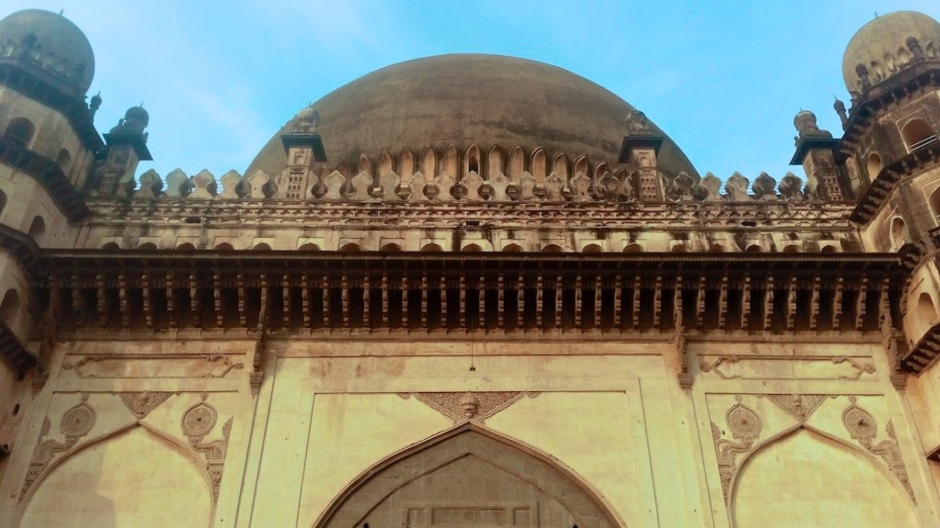
Prof. Tawade from Institute of science Bombay did acoustic study of Golgumbad sometime in early 1950s. He did on the request of archaeological department.
LikeLike
nice good information
LikeLike